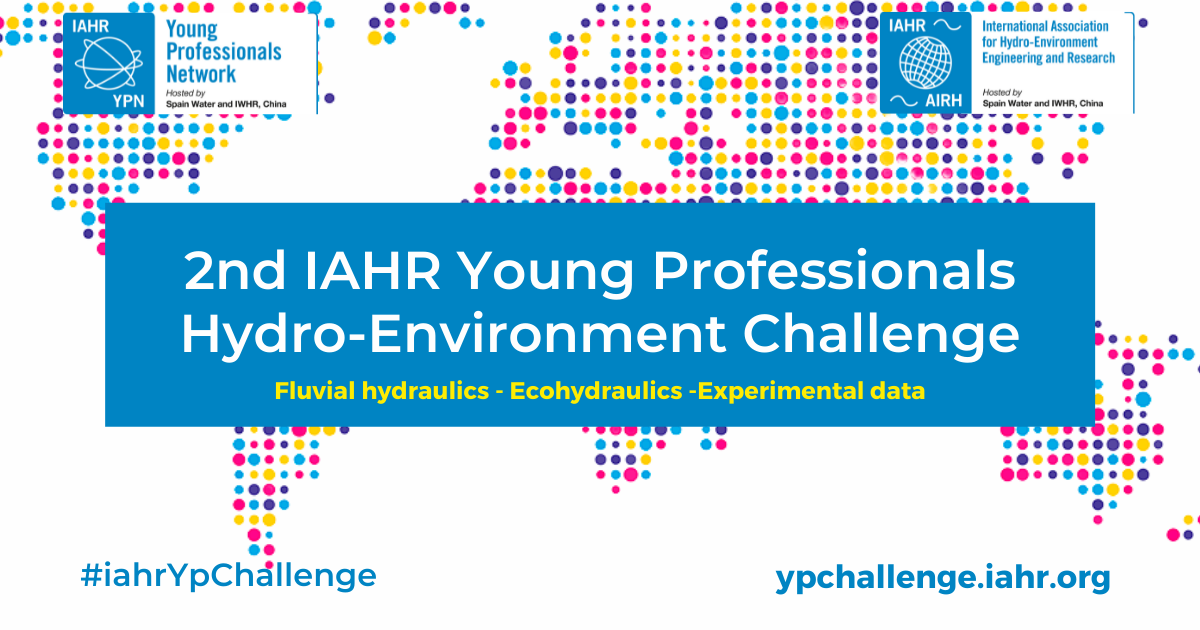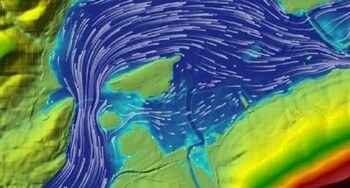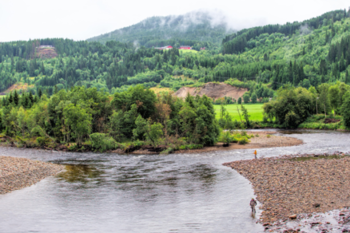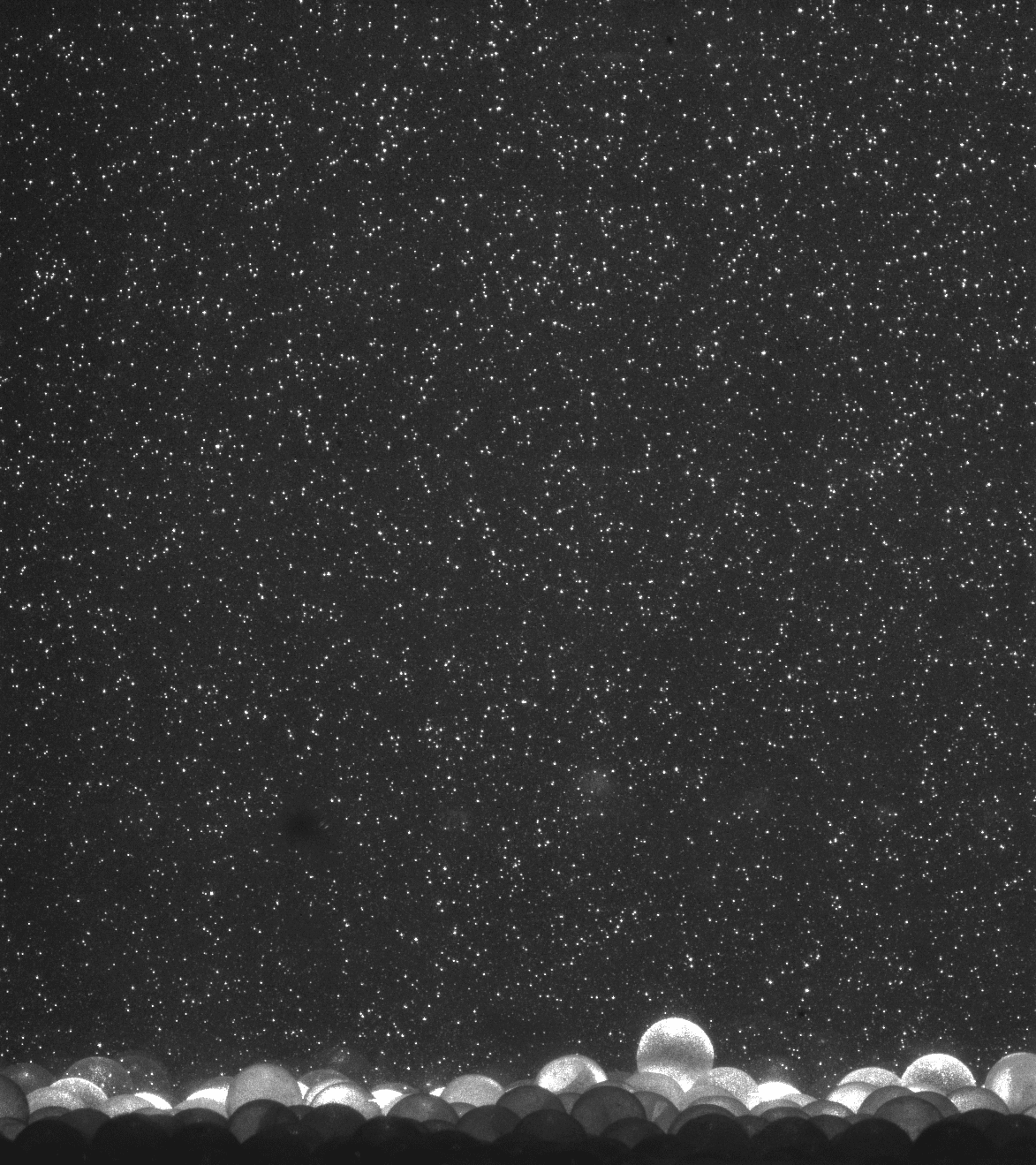2nd IAHR Young Professionals Hydro-Environment challenge

Meet the winners! Defense Participants Main page
The IAHR Young Professionals Hydro-Environment challenge seeks to promote international and interdisciplinary collaboration among young professionals and academics working at institutions across the globe in the hydro-environment field. It is an open contest, hence any kind of young professional profile working on any of the IAHR main themes is welcome to take part in the initiative. Several case studies will be assigned to the participating teams who, after a period of web-based collaborative engineering work, will present their project outcomes during an IAHR webinar to be held in May 2022. Project stakeholders and senior IAHR members will be involved during the design and mentoring of the case-studies. A jury made up of senior IAHR members and representatives from partners in academia and industry will evaluate the teams.
News
Kick off meetings:
Experimental Data Challenge: 8 March 2022 | 14:00-16:00 CET
Fluvial Hydraulics Challenge: 10 March 2022 | 14:00-16:00 CET
Ecohydraulics Challenge: 11 March 2022 | 14:00-16:00 CET
Defense meetings:
Experimental Data Defense: 31 May 2022 | 15:00 - 17:00 CEST
Fluvial Hydraulics Defense: 2 June 2022 | 15:00 - 17:00 CEST
Ecohydraulics Defense: 14 June 2022 | 16:30 - 19:00 CEST
Concept
International and interdisciplinary web-based collaboration.
Open contest, any kind of young professional profile working on any of the IAHR main themes is welcome to join the initiative.
Engineering challenges, case studies aligned with IAHR themes.
Universities and stakeholders are involved in setting up the case studies and providing mentoring to the students.
Winners will receive a free copy of an e-book from CRC Press / Balkema by Taylor & Francis Group.
Project outcomes to be presented during the 39th IAHR World Congress.
Certificate of participation will be provided to IAHR members.
General learning objectives
Upon completion of the challenge, each participant will be able to:
Analyse complex hydro-environmental problems for collaborative engineering.
Use web-based tools.
Defend his or her input on an interdisciplinary team of specialists.
Assess his/her own strengths and weaknesses with respect to working in a group.
Defend the groups' findings in front of a team of experts in the field.
Workload and implementation
Total hour load: 50 hours
Workload: 5 hours/week
Total duration: 10 weeks
Mentoring: two mentors per case-study, for technical support and coaching
Mode: online
Engineering Challenges
Fluvial Hydraulics Challenge
General description: Modelling of river hydraulics with hydropower dams. The task will be to model the river and analyse the hydraulic characteristics with and without the dam. The tool to be used will be HEC RAS 2D.
 Learning goal: Demonstrate use of engineering models when faced with data limitations associated with historical river condition.
Learning goal: Demonstrate use of engineering models when faced with data limitations associated with historical river condition.Organisations involved: United States Army Corps of Engineers (USACE)
Mentors:
- Technical mentor: David Smith. (ERDC - US Corps of Engineers. United States)
- 1st coach: Jose Maria Carrillo. (Universidad Politécnica de Cartagena. Spain)
- 2nd coach: David Ferras. (IHE Delft. The Netherlands)
Ecohydraulics Challenge
General description: Heavy hydropeaking in a tributary releasing into a highly protected, unregulated river. The students will assess the effects of the hydropeaking release from an ecological and socio-economic perspective.
 Learning goal: Develop critical thinking with respect to the ecological and socio-economic effects of hydropeaking.
Learning goal: Develop critical thinking with respect to the ecological and socio-economic effects of hydropeaking.Organisations involved: ECoENet and associate partners
Mentors:
- Technical mentors: Roser Casas (Technische Universitat Munchen. Germany), Ana Adeva-Bustos (SINTEF Energy Research. Norway), Daniel Hayes (BOKU. Austria) and Davide Vanzo (ETH Zurich. Switzerland)
- 1st coach: Michael Nones. (Institute of Geophysics. Polish Academy of Sciences. Poland)
- 2nd coach: Maria Bermúdez (University of Granada. Spain) and Eva Fenrich (Esslingen University of Applied Sciences. Germany)
In collaboration with EcoENet
Experimental Data Challenge
General description: Explore a laboratorial database acquired with Particle Image Velocimetry (PIV) in a boundary layer flow. PIV is an advanced optical measurement technique employed in a large range of research and industry applications ensuring good performance, efficiency and high resolution. The objective is to carry out an analysis of a turbulent open-flow over a glass bead bed based on an existing PIV database.
 Learning goal: Explore a laboratorial database acquired with Particle Image Velocimetry (PIV) in a boundary layer flow. PIV is an advanced optical measurement technique employed in a large range of research and industry applications ensuring good performance, efficiency and high resolution. The objective is to carry out an analysis of a turbulent open-flow over a glass bead bed based on an existing PIV database
Learning goal: Explore a laboratorial database acquired with Particle Image Velocimetry (PIV) in a boundary layer flow. PIV is an advanced optical measurement technique employed in a large range of research and industry applications ensuring good performance, efficiency and high resolution. The objective is to carry out an analysis of a turbulent open-flow over a glass bead bed based on an existing PIV databaseOrganisations involved: Committee on Experimental Methods and Instrumentation of IAHR
Mentors:
- Technical mentor: Rui M.L. Ferreira (Instituto Superior Tecnico Lisbon, Portugal)
- 1st coach: Ana Margarida da Costa Ricardo (Instituto Superior Técnico Lisbon, Portugal)
- 2nd coach: Michael Nones. Institute of Geophysics. (Polish Academy of Sciences. Poland)
Organising committee
Michael Nones. Institute of Geophysics. Polish Academy of Sciences. Poland
David Ferras. IHE Delft. The Netherlands
Eva Fenrich. University of Stuttgart. Germany
José M. Carrillo. Universidad Politécnica de Cartagena. Spain
María Bermúdez. University of Granada. Spain
Supporting organisations
ETH Zürich, Switzerland
IHE Delft, The Netherlands
Institute of Geophysics. Polish Academy of Sciences. Poland
Instituto Superior Técnico Lisbon, Portugal
Norwegian Environment Agency, Norway
Sintef, Norway
Technical University of Munich, Germany
United States Army Corps of Engineers (USACE)
Key dates
Call opens: 31 January 2022
Deadline for applications: 20 February 2022
Project starts: 7 March 2022. Kick off meetings:
Experimental Data Challenge: 8 March 2022 2-4 pm CET
Fluvial Hydraulics Challenge: 10 March 2022 2-4 pm CET
Ecohydraulics Challenge: 11 March 2022 2-4 CET
Project ends: 21 May 2022
Experimental Data Defense: 31 May 2022 3-5 pm CET
Fluvial Hydraulics Defense: 2 June 2022 3-5 pm CET
Session "Meet and Greet" during the 39th IAHR World Congress